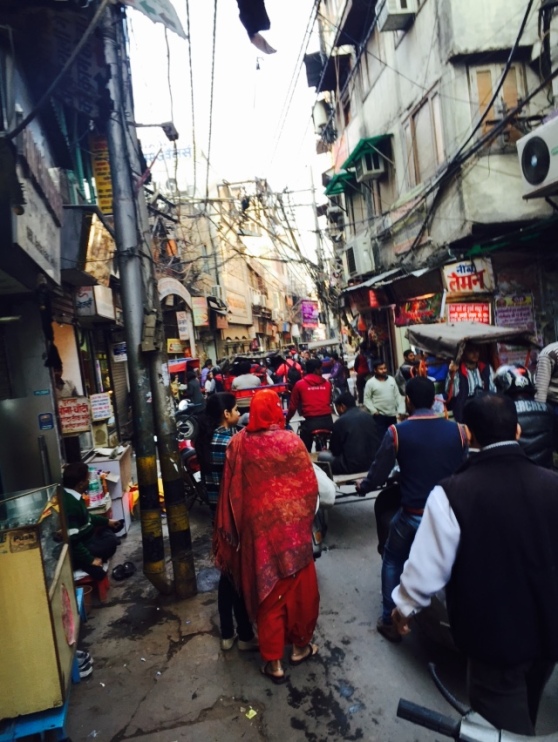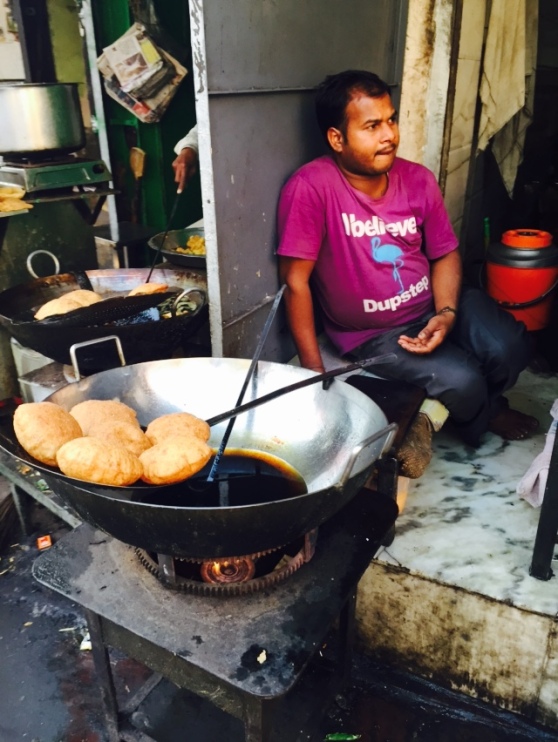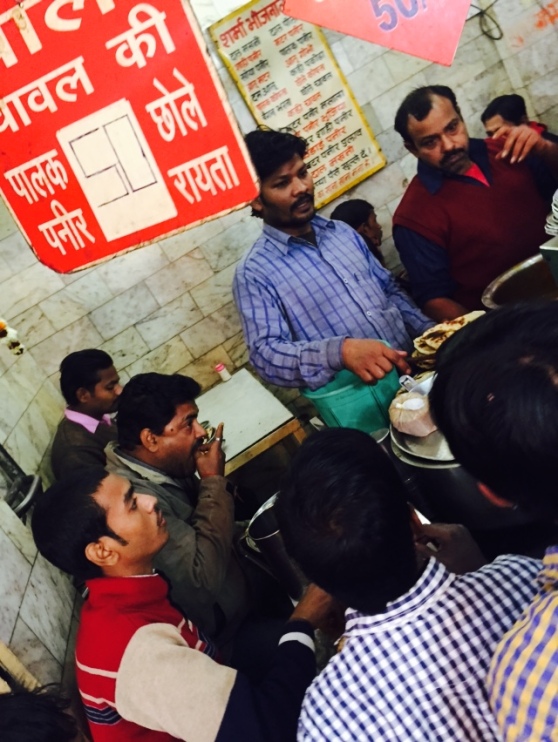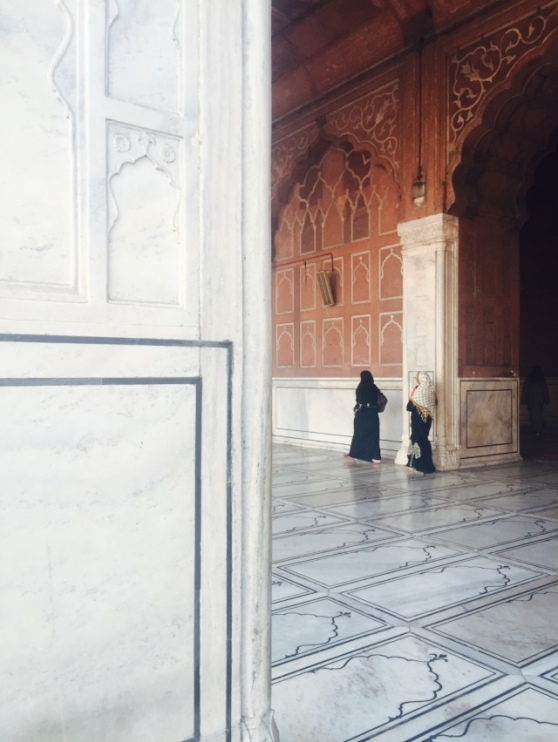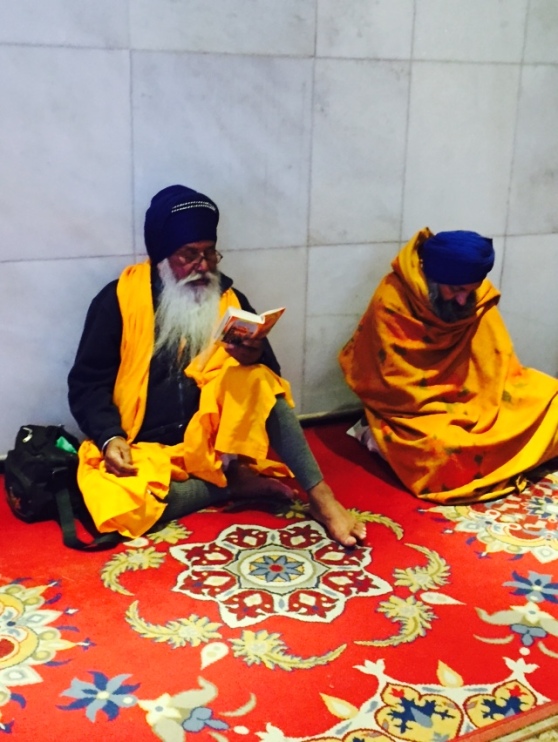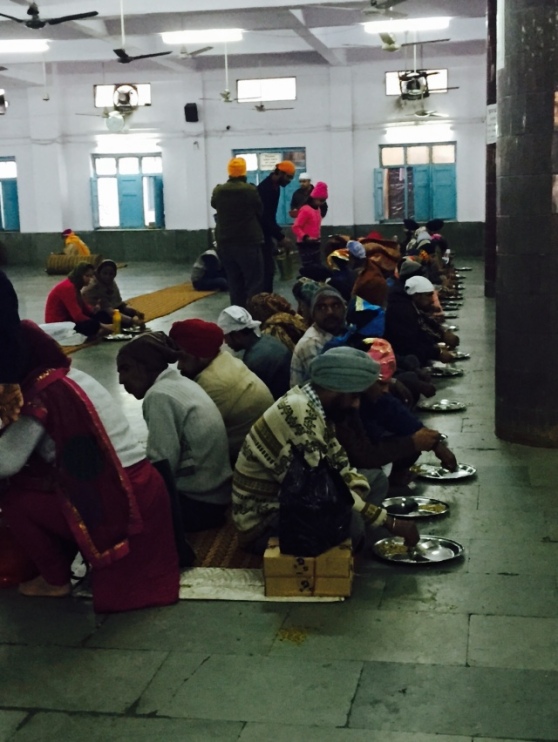Next stop was Delhi. Holy shit – what a city. It hosts the government’s legislature, executive and judiciary arms of the government. It also happens to be the seat of authority for the Government – so techinically is ‘one’ of the capitals of India. Delhi’s population is low by Indian standards, it is home to about 300,000 people, and its metropolis has about 14 million people, I am told it is made up of seven seperate distrcits tht have been merged to make ‘Delhi’ proper. 88.8 % are Hindus and the rest are Muslims, Sikh, Jain and Christian. I very sadly missed out on this, but Delhi’s Khari Baoli Market is Asia’s largest wholesale spice market and reputedly the best in the world… probably best I missed it after spending £50 on spices in Mumbai.
The city is manic and communication is a challenge. I got a taxi from the airport, through the official ‘police’ channels they encourage you to use. They charge you up front in a little kiosk and take your details, then you randomly pick a driver and give them your slip of paper, which should contain the address of where you want to go… but the majority cannot read, nor can they speak English, so hours and hours of random driving and pointless verbal exchanges ensue.
The car horns, like in Vietnam, are nonstop. They beep to overtake, to let you know they are they are, when they are pissed off, when they are happy, when they are parking – everything. It is relentless. Rickshaws, motorbikes, pushbikes, people, animals fill the roads, pavements, and your ears from morning until night. The street is the sales ground for everyone, so the noise is non stop. In western culture, the pavements and roads are used to get places – and those places are where you buy things, generally inside. In India, everything is on the street; food stalls, barbers, dentists, dogs, butchers, fishmongers, cows, toilets, groceries, tuc tucs, touts, beggars, shops, everything.
As a solo female traveller in India, I cannot say I felt safe (anywhere, not restricted to Delhi) and I am glad I was part of a tour, even though I usually hate those kinds of things and prefer the freedom of doing things alone. India is not a country I would be happy to do alone, or even without a male companion. Due to the history and culture of the country, the majority of women are shut away at home fulfilling their domestic duties, so the streets are predominantly filled with men and pretty much all your interactions are with men. And there are a lot of men, everywhere. Coming from a highly developed and westernised country with an ardent focus on equality, this is quite disconcerting at best and scary at worst. The safety advice you are given on tours only fuels this, and being a passionate feminist, it makes my blood boil that it is the victims are told how to act, rather than correcting the offending behaviour. But when in Rome…
We spent the day touring round some of the key sites, such as Jamia Masjid (mosque), Baba More Sarai and the Sikh houses of worship that reside there, and the old streets of Delhi, which were definitely an experience and not for anyone who suffers from claustrophobia. We used the metro to travel round, which was similar to the London tube, but with about 3 times the number of people in the same capacity. For the safety of women, they have their own women’s carriage, which was nice.
Jamia Masjid
Built in 1650 AD by the fifth Mughal emperor, Shahjahan and 6,000 labourers, it took 6 years to construct. It allegedly took so long to construct as the Quran was recited to every single stone before being laid, to consecrate it.
Gurudwara Sis Ganj Sahib, Sikh temple
Established in 1783 by Beghal Singh to commemorate the martyrdom of the ninth Guru, Tegh Bahadur. Guru Tegh Bahadur sacrificed himself as a refusal to convert to Islam and this house of worship was built on the site of his be-heading. It has a huge kitchen onsite, which offers free food to everyone, Sikh or not, which is great for the poor community of Delhi who struggle themselves a simple meal. Everything is run entirely on volunteer time. We watched them making hundreds of chapattis and humungous vats of vegetable curry, which is dished out continously for whoever turns up for food.
Our guide also took us through the back streets of old Delhi, where tiny little winding streets have back to back tiny shops selling food and books and trinkets and groceries. One of the streets was so narrow you physically couldn’t get through and we had to push our way out on to the main street. The video I took doesnt quite do it justice!
I was glad to leave Delhi for my own mental sanity, but maybe if I had have had more time there it would have grown on me.


